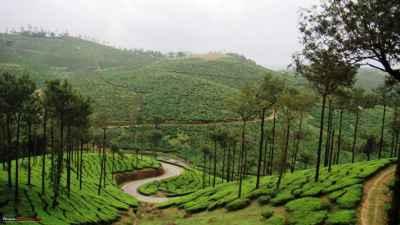Wood Carving in Kerala: An Age-Old Art
Kerala, often referred to as "God's Own Country", is not only known for its stunning backwaters and beautiful beaches, but also for its rich cultural heritage. One such ancient art form that has been practiced in Kerala for centuries is wood carving. In this blog post, we will take a closer look at wood carving in Kerala, its history, techniques, and its importance in the state's cultural landscape.
A Brief History of Wood Carving in Kerala
The art of wood carving in Kerala has a long and illustrious history that dates back to ancient times. It is believed to have originated during the time of the Chera dynasty, which ruled the region around the 9th century AD. The intricate wooden sculptures created during this period were primarily used to decorate temples and palaces.
Over the centuries, wood carving in Kerala evolved and incorporated influences from various other art forms, including Dravidian, Buddhist, and Jain. The art form reached its zenith during the 16th and 17th centuries, under the patronage of the royal rulers of Kerala. The temples and palaces of that era feature some of the most remarkable wood carvings, showcasing the skill and craftsmanship of the artisans.
Techniques and Styles
Wood carving in Kerala is a meticulous and time-consuming process that requires immense skill and precision. The artisans use various tools like chisels, hammers, and knives to carve intricate designs and motifs on blocks of wood. The designs are usually based on traditional motifs like flowers, animals, gods, and goddesses.
One of the unique features of wood carving in Kerala is the extensive use of teakwood. Teakwood, with its rich texture and durability, is preferred by the artisans for their creations. The wood is treated with natural oils and varnishes to enhance its longevity and beauty. The artisans also use natural dye and pigments to add color to the carvings.
There are different styles of wood carving in Kerala, each with its own distinct characteristics. The most prominent styles include the Malabar style, which is characterized by its large-scale sculptures and intricate designs, and the Palakkad style, which is known for its simplicity and elegance.
Importance in Kerala's Cultural Landscape
Wood carving in Kerala holds a significant place in the state's cultural landscape. It is not just an art form but also a means of livelihood for many artisans. The traditional craftsmen, known as "kaarigars", pass on their skills and knowledge from one generation to another.
The wooden sculptures created by these artisans adorn temples, palaces, and heritage sites across Kerala. They not only add to the aesthetic beauty of these structures but also provide a glimpse into the rich history and cultural heritage of the state.
Wood carving in Kerala is not limited to religious or architectural purposes. It has also found its way into modern home decor and furniture. Many artisans create contemporary pieces like wall hangings, lamps, and furniture, blending traditional designs with modern techniques.
Conclusion
Wood carving in Kerala is an age-old art form that showcases the skill, creativity, and craftsmanship of the artisans. It is an integral part of the state's cultural heritage and has stood the test of time. The intricate wooden sculptures created through this traditional art form continue to be admired and cherished by people from all over the world.
By preserving and promoting wood carving in Kerala, we not only support the livelihood of the artisans but also ensure that this beautiful art form continues to thrive for generations to come. So, the next time you visit Kerala, don't forget to appreciate the exquisite wood carvings that adorn its temples and palaces.
Did you find this article interesting? Share it with your friends and family to spread the word about the fascinating art of wood carving in Kerala!
Disclaimer : The information provided in this blog is for general informational purposes only. While we strive to keep the content accurate and updated, TravelSetu assumes no liability for errors or omissions. If you believe any part of this blog infringes your rights or causes concern, please notify us immediately at info[at]travelsetu[dot]com so that appropriate action can be taken.






















